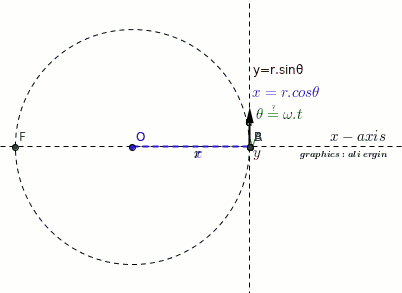How can I calculate maximum velocity in simple harmonic motion?
I know that the equation for velocity is
#V= -omega Asin(omega t +phi# )
supposing #phi# to be zero , cuz if the object is released from the mean position then, at the mean position displacement is zero so,
#sin phi# = 0 →#phi# = 0.
I know from the velocity time graph for SHM that max velocity = #Aomega# .
That is the argument must be -1
How will that be possible ? the argument can only be zero for #2pi/3# right?
Am I missing something?
I know that the equation for velocity is
supposing
I know from the velocity time graph for SHM that max velocity =
That is the argument must be -1
How will that be possible ? the argument can only be zero for
Am I missing something?
1 Answer
Explanation:

-
we recommend that you first watch the animation carefully
-
Let P be a point rotating around the O point at a constant linear velocity(u).
-
The projection of P on the x-axis is point B.
-
The movement of point B is limited between A and F.
-
The simple harmonic motion is the action of point B.
-
Please note that the velocity vector changes direction.
-
At points A and F, the velocity of B is zero(green vector).
-
The greatest velocity B has is at O.
#theta=pi/2 and theta=(3pi)/2#

